In this Decodable Text Series, we’ve been exploring questions about the place, the purpose, and the practicality of using decodable texts with beginning readers. You can catch up here if you’ve missed our previous posts.
Today’s question:
What are some other affordable ways to weave decodable texts across the school day?
Once you’ve embraced the importance of decodable texts, you’re sure to find lots of creative options to give your students more access to them across the school day. And remember, every decodable text does not need to be a professionally published, full-color book.
In this post, we want to prime the pump for thinking creatively about decodable text options across the school day. Best of all, you likely already have many of these materials right at your fingertips. So, here are three ideas for giving students more access to texts that are aligned to the decoding practice they need.
IDEA 1: Passages, Paragraphs, Sentences, and Word Lists
Although it would be great if many of your decodable texts were actual books, they can also be “one-pagers,” such as poems, paragraphs, or passages. And these single pagers can come from an online source or a curriculum resource, or you can even try your hand at making some yourself.
In fact, to get started, you may want to print a copy of our Decodable Word Lists and Sentences for short or long vowels from our downloads page. These documents contain dozens of word lists–all organized by phonics skill–as well as sample sentences for each skill. We’ve designed these lists as a flexible resource for you as you work to weave more skill-specific reading practice across the day.
Here are some examples of simple teacher-created decodable texts written with the support of those word lists. See if you can detect which sound-spelling patterns each text reinforces.
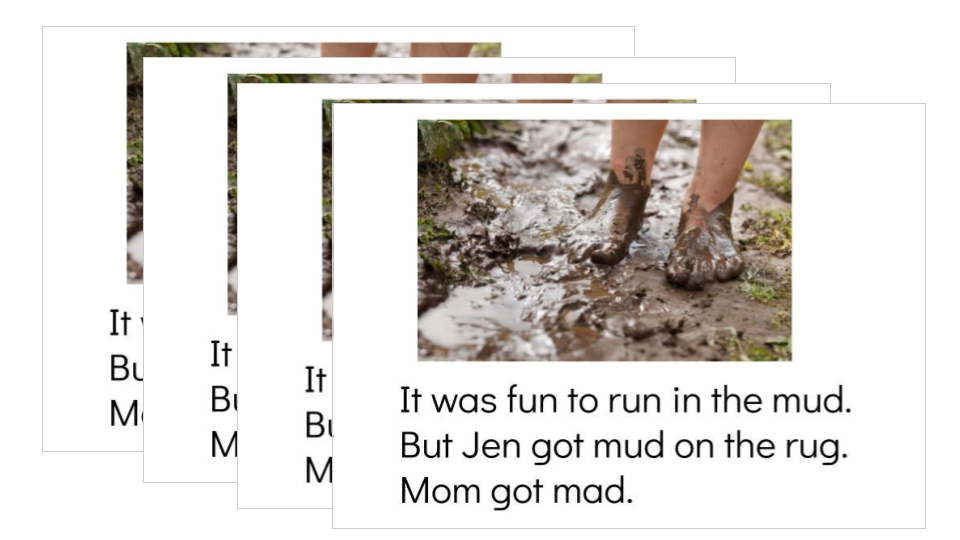
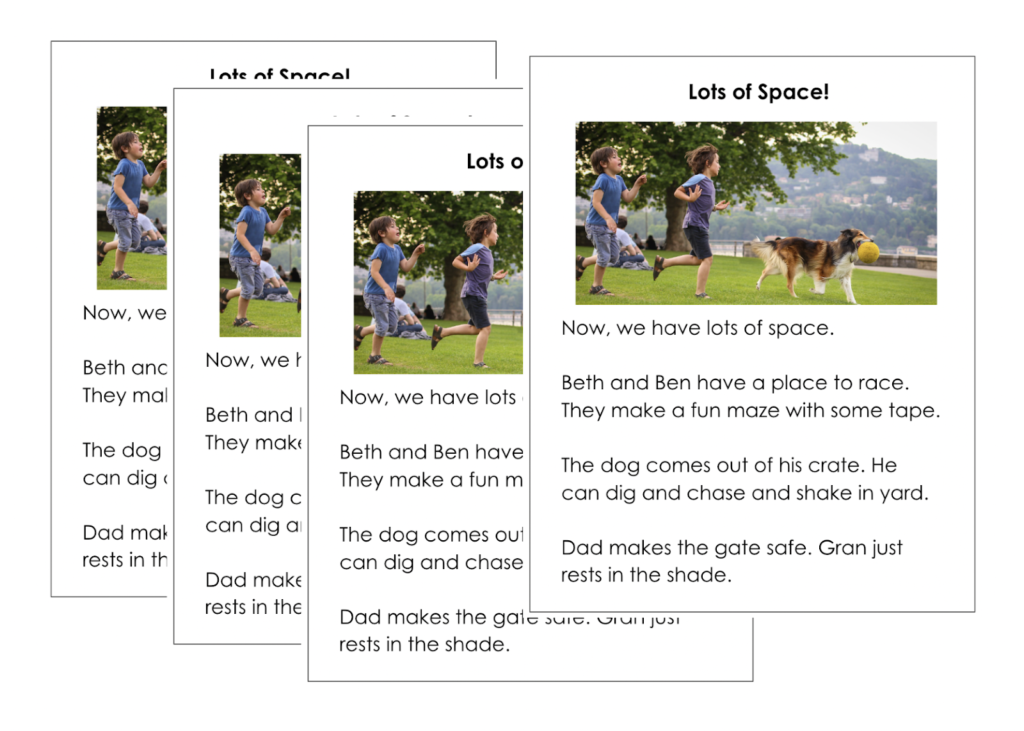
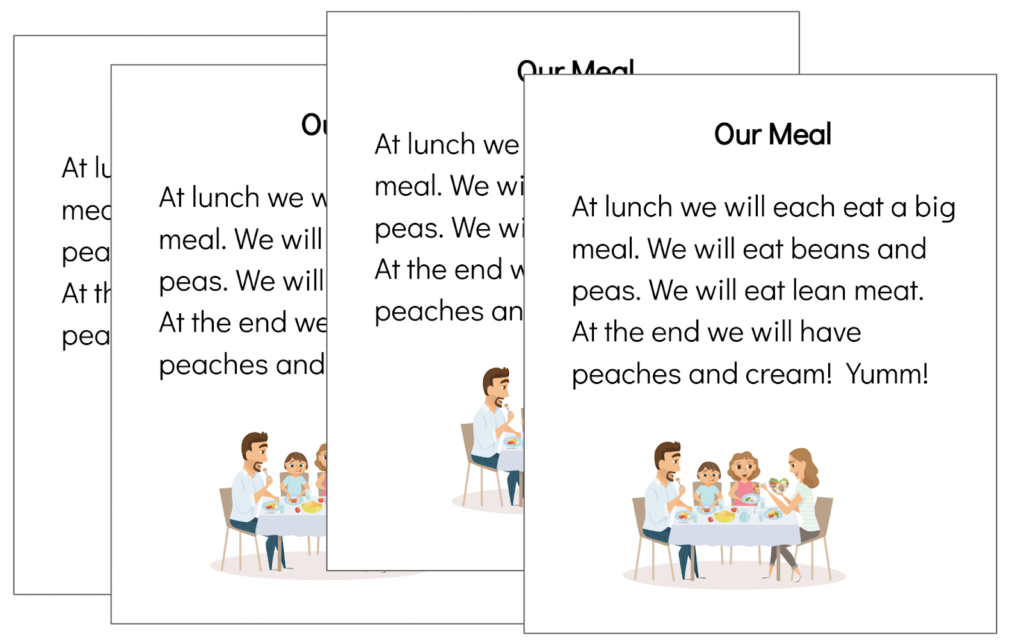
You can introduce passages like these during a whole-group phonics lesson or during small-group instruction. One of the nice things about single pages of text is that they are easy to duplicate, so each child can have their own copy to keep in a binder.

And the more passages students accumulate in their binder, the more access they’ll have to cumulative review and practice of the skills you have taught them. Along with the passages, some teachers we know even offer children additional word-level blending practice by including a list of words for each concept in the binder.
IDEA 2: 1-2-3 Draw
This is a simple independent practice activity that provides decoding, fluency, and comprehension opportunities! All you need is 4-6 free-standing (unrelated) sentences that contain both focus and review skills.
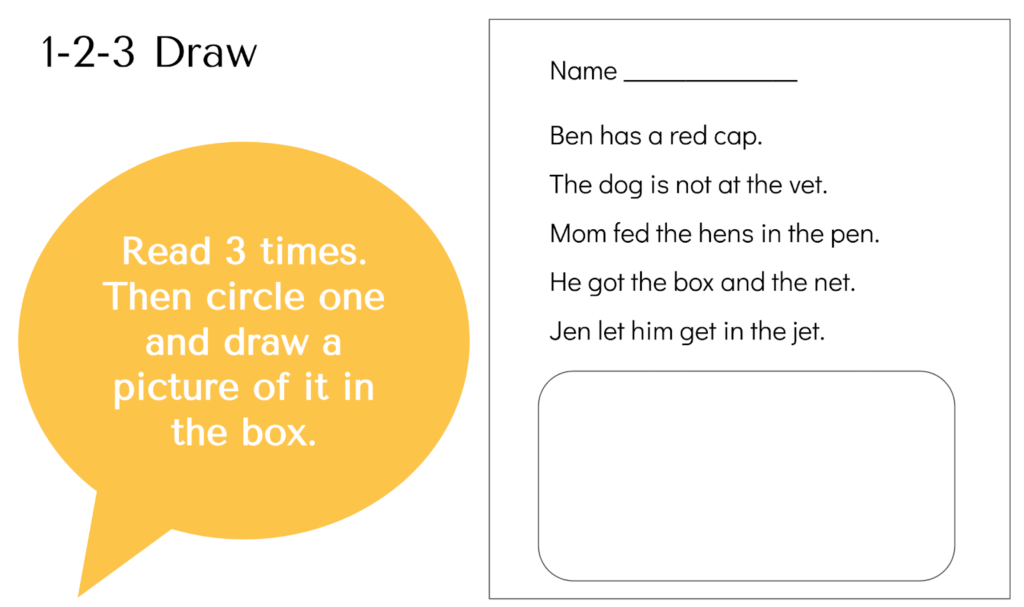
Here are the student directions:
Read each sentence ___ times.
Mark the sentence with a star (checkmark, etc.) each time you read it.
After you read all the sentences at least ___ times, choose one sentence to illustrate.
Here are a couple of great examples of students reading and illustrating unrelated sentences. We love the creativity they brought to the work! Take a close look at the sentence that each student chose to illustrate, then reflect on the questions that follow.

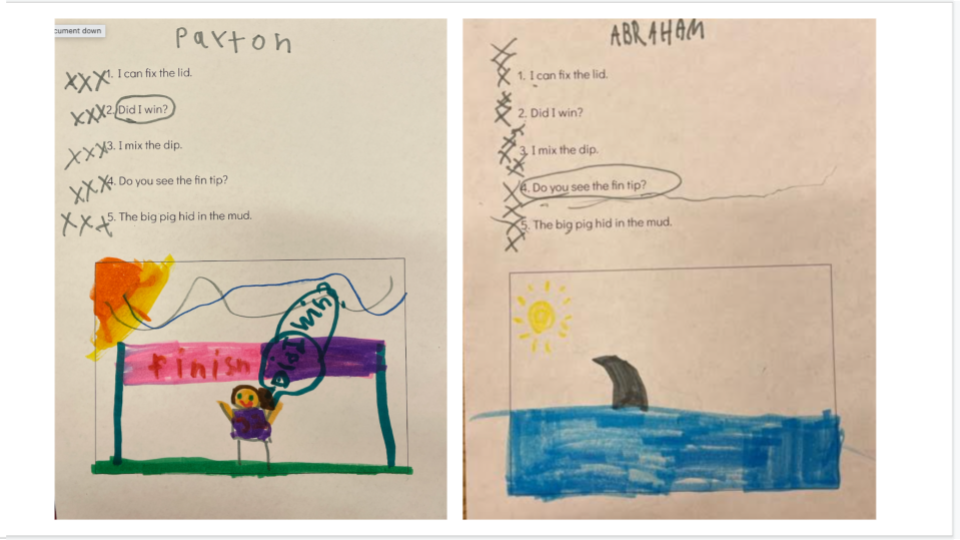
What did you notice about the work? What did this task require in terms of word recognition? What did this task require in terms of comprehension? What details of the illustration come explicitly from the sentence? Which parts of the illustration required an inference? What do we know about these readers?
IDEA 3: Sentence-Go-Round (Version 1) – Walking Around a Circle
This game is a variation of musical chairs. On a sentence strip, write a single decodable sentence focused on the new phonics skill. Prepare enough strips to distribute to each child in the group.
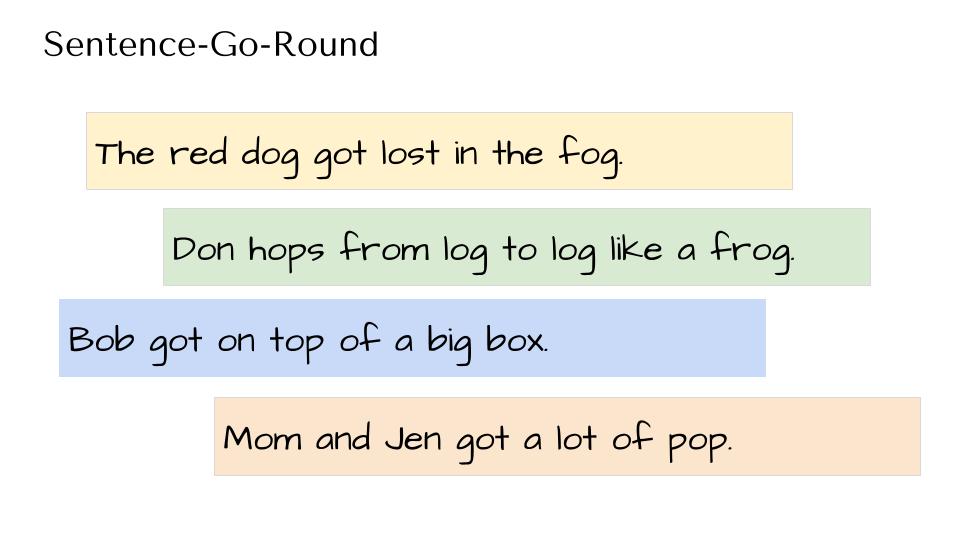
Here are the student directions:
- Carefully read your sentence aloud as many times as you can before the music starts.
- When the music begins, place your sentence on the floor in front of you inside the circle.
- Begin walking around the outside of the circle.
- When the music stops, stand in front of the closest sentence and pick it up.
- Repeat.
As you accumulate sentence strips for a growing number of new phonics skills, you can purposefully weave in a few sentences from previous skills, reusing sentence strips to provide a cumulative review.
Note: Because we want everyone to have practice on every round, we choose not to remove a sentence or eliminate a reader on each round, as you would in traditional musical chairs!
IDEA 4: Sentence Go Round (Version 2) – Sitting at the Small Group Table
In this variation, the basic routine is the same, but students stay seated at a table and simply pass the strips around the table rather than walking around the circle. Students simply listen for you to say the keywords “PASS” and “READ.” You’ll probably want enough sentences to include yourself as part of the passing circle!
Here are the student directions:
- Carefully read your sentence aloud as many times as you can.
- When you hear the word “PASS,” hand your sentence to the person on your right.
- Keep passing until you hear the word “READ.”
- Hold onto the sentence you have and start reading it.
- Repeat.
What other ideas do you have about how to weave more decodable texts across the school day? We’d love to hear from you!
Binge our entire 6-part blog series about decodable texts!
Decodable Texts Q&A (Part 1): What? Why? Who?
Decodable Texts Q&A (Part 2): How Many is Enough?
Decodable Texts Q&A (Part 3): What to Look For? The WORDS.
Decodable Texts Q&A (Part 4): What Else to Look For – The MEANING.
Decodable Texts Q&A (Part 5): What About FREE Decodables?
Decodable Texts Q&A (Part 6): More Ideas for Getting Started!
-

Jan Burkins and Kari Yates are authors, speakers, and consultants, who are dedicated to helping teachers around the world translate reading science into simple instructional moves that help teachers make learning to read easier for their students while still centering meaning-making, engagement, and joy.
Recent Posts


These are great ideas and sound like fun. I will share with other teachers.
These are great activities! I especially like the drawing activity as it would be useful for my EL students.
So glad to hear it!
The link for Decodable Word Lists and Sentences for Long and Short Vowels takes me to a previous link you had posted called Short Vowels, Blends and Digraphs – Decodable Word lists and Sentences.
Yes. That was our intent. These are word lists and sentences to support beginning decoding skills. They are a flexible resource that can be used in dozens of ways.
I love your idea #2: 1-2-3 Draw! What I have added to it is after the students have their drawings completed (we just do a 1-minute pencil sketch) I show the pictures on a monitor and the students try to guess which sentence the student drew. It is kind of like Pictionary, but the other students are having to retrieve from their memory what the sentences were about in order to make a good guess. Once it is correctly guessed, we all clap for the artist & the guesser 🙂
Sounds fun! Would it work to have the students reread the sentences rather than recall them from memory? Could they be displayed on the monitor as well? Just thinking it would give more opportunity to map those words!